LARSON CENTURY RANCH, INC.
Fucoidan | U-Fucoidan/U-FN | Apoidan | U-Apoidan | | Limu Moui
P. O. Box 1982, Clarkston, WA 99403
Telephone: 509-758-5445, FAX: 509-758-5701
E-Mail: Sales@LarsonCenturyRanch.com
This page was last updated on: 3/23/2011
Copyright © 2004 Larson Century Ranch, Inc. ~ All Rights Reserved
Guest Book
8 Fucoidan Research
See: National Library of Medicine Type In Search Box: "Fucoidan".
FUCOIDAN, MODIFILAN, U-FN
Apoidan/Apoidan-U/Kombu
LimuPlus (Limu Moui) Sales
Alternative Medicine ~ Alternative Health, Dietary Supplements, Health
Health Foods, Health Products, Dietary Supplements, Nutrition,
Vitamin Supplements

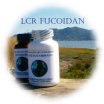

There have been over 500+ International Scientific Studies. See: National Library of Medicine ...
Type In Search Box - "Fucoidan"
8 SEAWEED
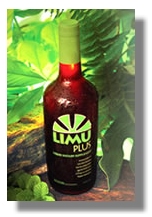
Web: Design Carte
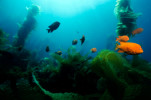
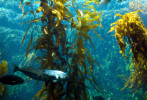


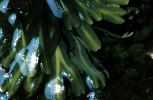
There have been over 500+ international scientific studies. (See: National Library of Medicine - Type In Search Box: "Fucoidan".
The results are in: Fucoidan is fantastic!
Click Here: ORDERS
All research done on Fucoidan indicates that it is completely safe to use and is nonallergenic; and it has no harmful effects on any bodily functions or organs.
DISCLAIMER: The Food and Drug Administration has not evaluated these statements. This product is not intended to diagnose, treat, cure or prevent any disease.
INTRODUCTION TO SEAWEED
by I. Yaychuk-Arabei, PhD, MH. RNC
There are several hundred species of seaweed (kelp). Only a handful of these kelp, nori, moss and dulse are familiar to North Americans. Seaweeds are nonpoisonous, although not always palatable. We assume that people living close to the sea (e.g., Japanese, Scandinavians, or Irish) consume seaweeds. They are not the only ones, however. Several decades ago, Dr. Weston Price, a dentist, found that natives of the high Andes carried a small bag attached to the neck. In it was a greenish-brown substance, a quantity of which was consumed everyday. The substance was seaweed obtained from coastal Indians. In spite of the difficulty in obtaining such seaweed, these extraordinarily healthy dwellers of the high Andes would not do without it.
The sea contains in solution every element necessary to maintain healthy life. Thus, seaweeds are considered the most nutritious plants on earth. Their nutritive values greatly exceed those found in other food sources - and are in an organic form that humans can readily utilize. Seaweeds are especially rich in calcium and iodine. It also supplies chromium (essential for glucose utilization), zinc (for collagen strength and health skin), iron, potassium, copper, sulphur, silver, tin, zirconium, phosphorous, and silicon (crucial to skin elasticity), magnesium, manganese, boron, bromides, and other trace minerals necessary for health.
IODINE
The most important nutrient provided by kelp is iodine. This is particularly crucial for inland iodine-poor soil, such as that found in the Great Lakes area of North America and in Central Europe. The amount of iodine in sea plants exceeds that found in inland plants by as much as 20,000 per cent. Kelp iodine facilitates the passage of nutrients into mitochondria (small components of body cells).
METABOLISM
Native Hawaiians tend to be stocky and overweight, yet they experience little heart disease or other health problems. They attribute this to lima lip, their native kelp. Both Norwegians and traditional Japanese are healthy people who are also great consumers of sea vegetation.
Often obesity and sub-clinical iodine deficiencies are related. That may be why some reducing diets encourage the use of algae. Calories in sea vegetables are also negligible, and fat content is only from one (1%) to eight percent (8%). Bladderwrack is often used in "slimming tea" formulas.
LCR FUCOIDAN
LCR Fucoidan/Modifilan
Apoidan
90 Gel Capsules 500mg
LCR U-Fucoidan PLUS (U-Fn)
Apoidan-U
60 Gel Capsules
600mg (See: U-Fn)
Also See: Seaweed/kelp
POWDER OR CAPSULES
AVAILABLE... INQUIRE (509-758-5445)

